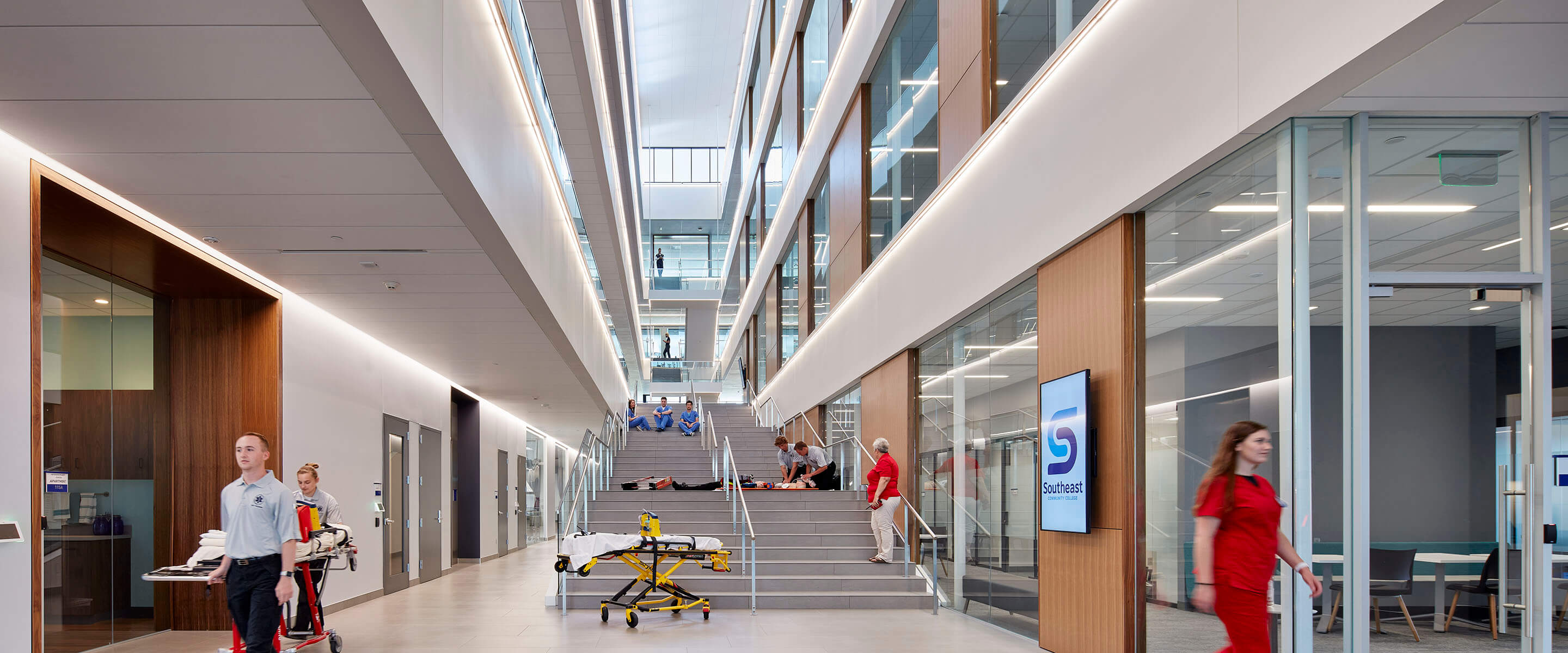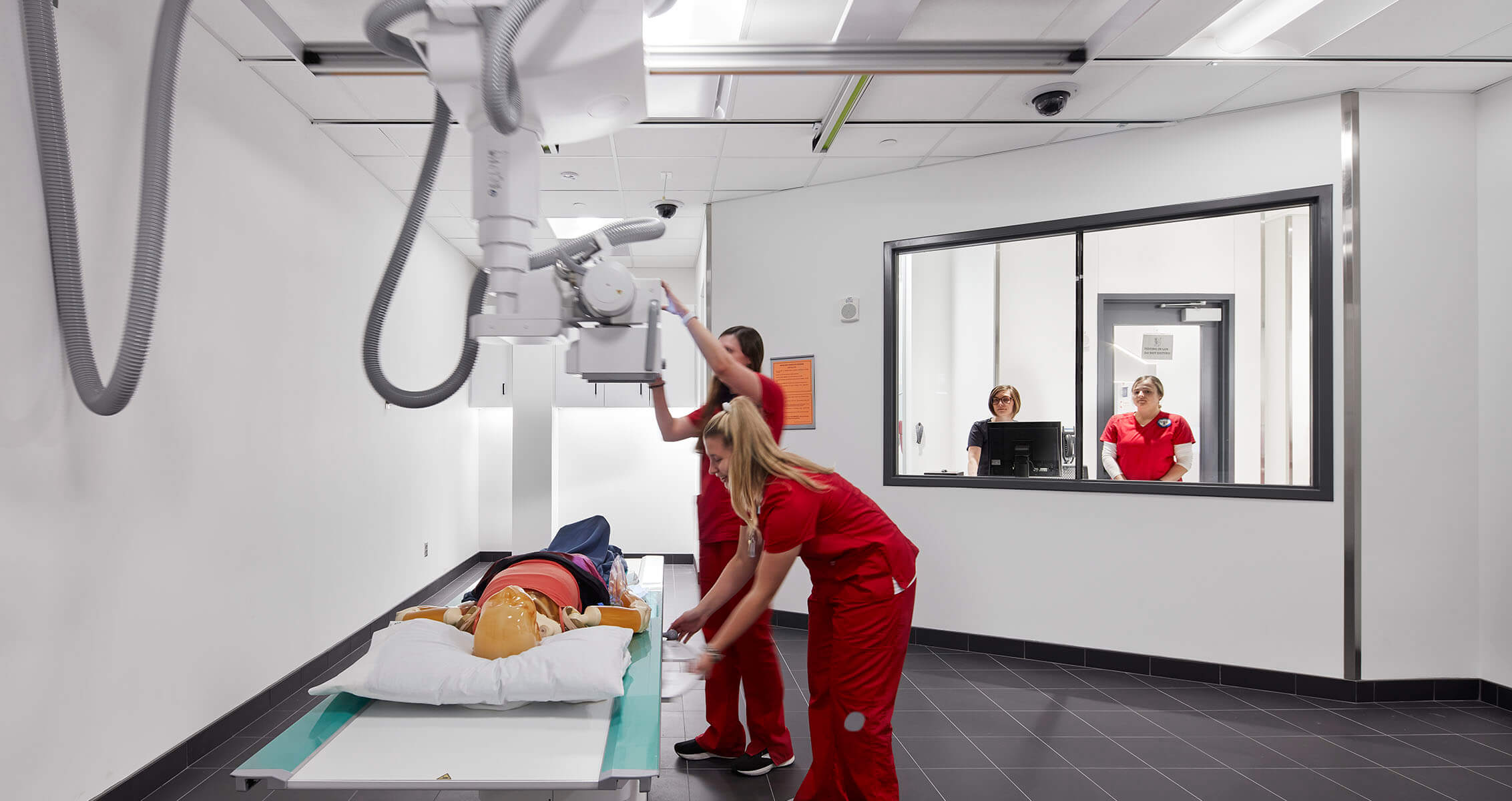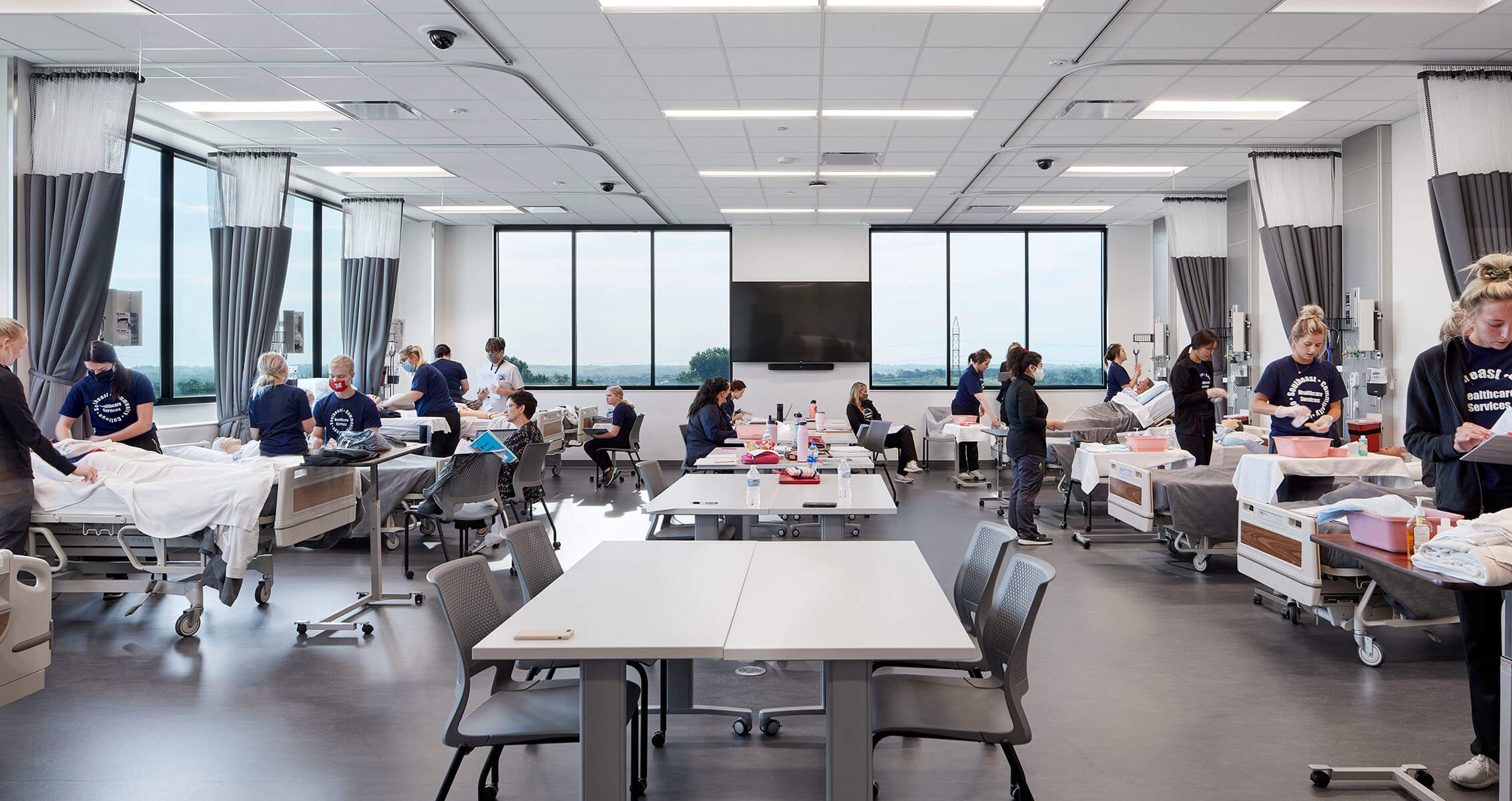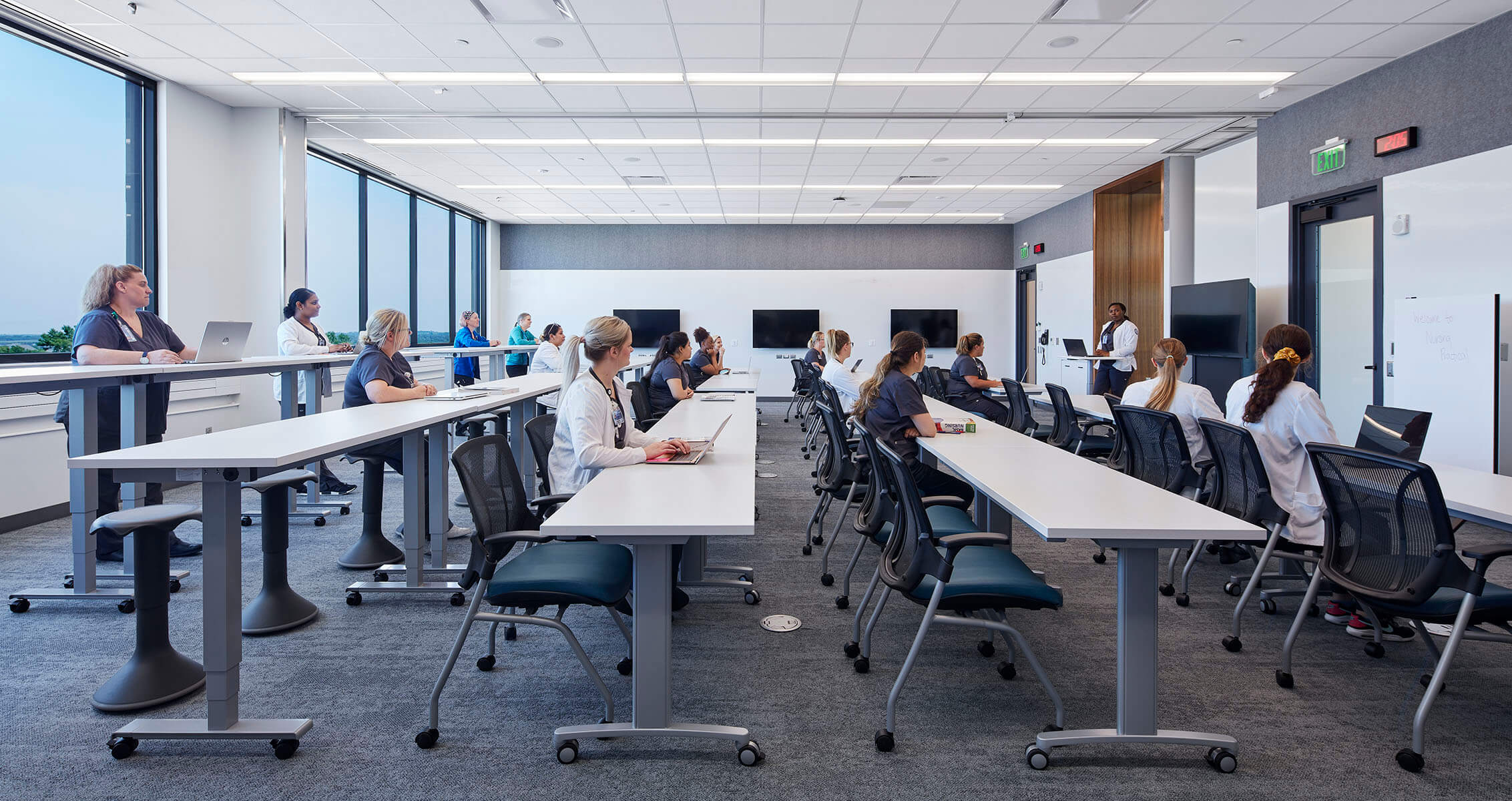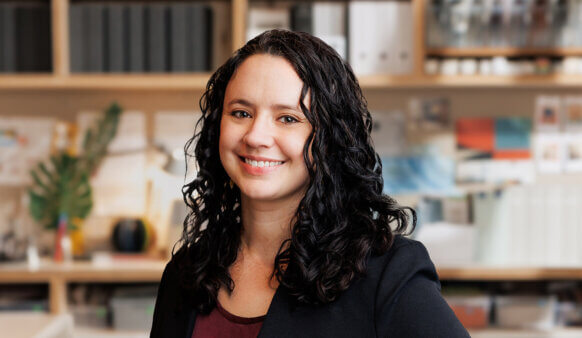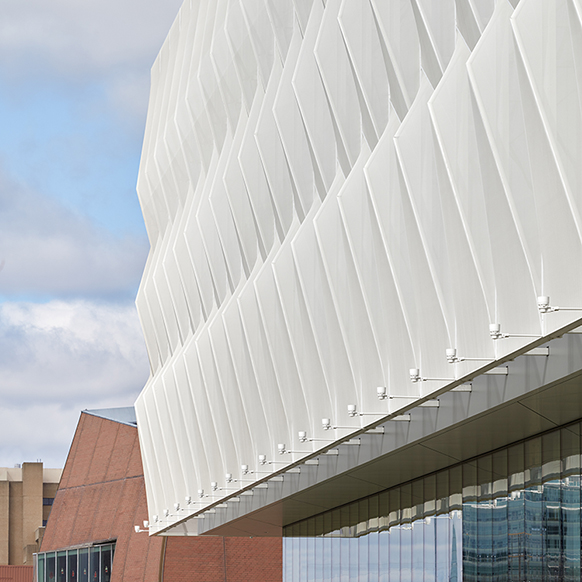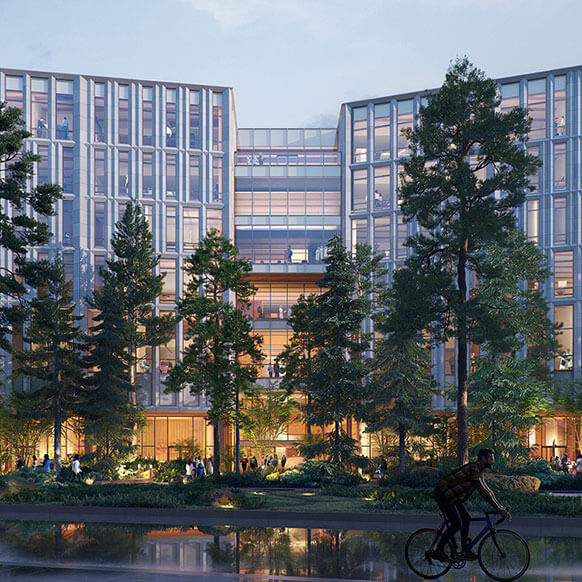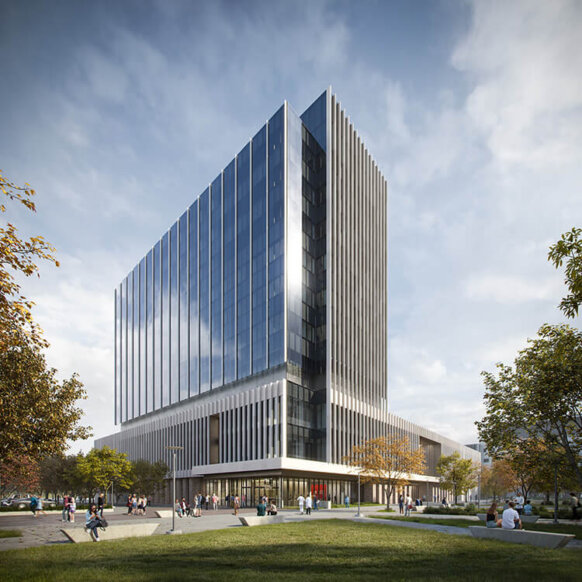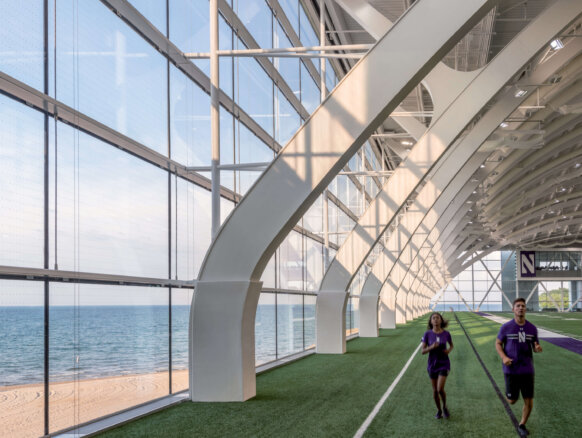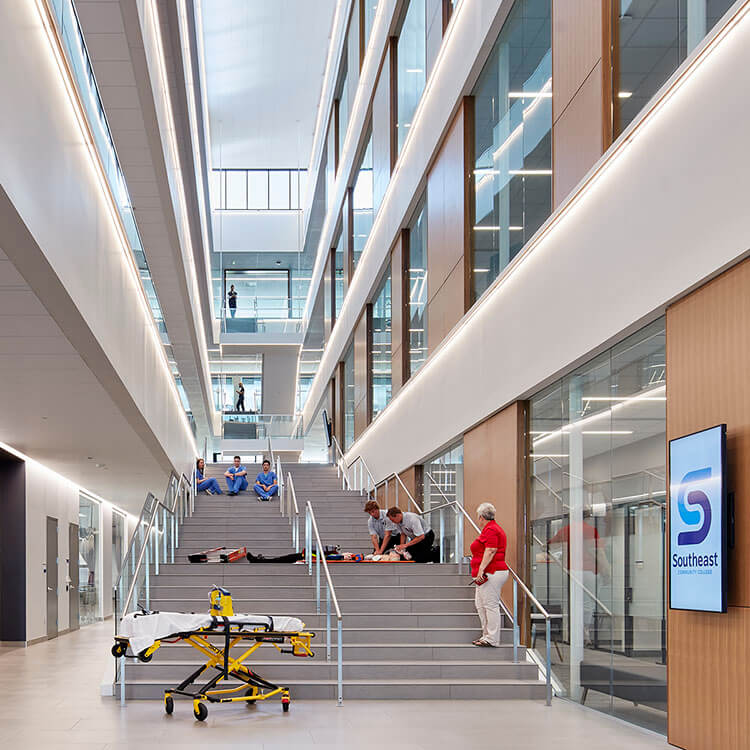
Southeast Community College Health Sciences Building
Serving students across 15 counties in Nebraska, Southeast Community College offers instruction and hands-on training in 18 health sciences programs like Nursing, Radiography, and Respiratory Therapy. Students come from urban, suburban, and rural areas, with many students joining classes remotely and completing hands-on work at smaller learning centers throughout the service area.
When the time came to move out of their outdated building, Health Sciences Dean Jill Sand took advantage of the opportunity to encourage faculty to completely re-think their space and enrich their curriculum.
The result is the new, three-story Health Sciences Building, which puts learning on display and prioritizes transparency and practical experience. With realistic workplace settings, cutting-edge equipment, and remote learning technology, the building supports a curriculum that’s centered on collaborative learning.
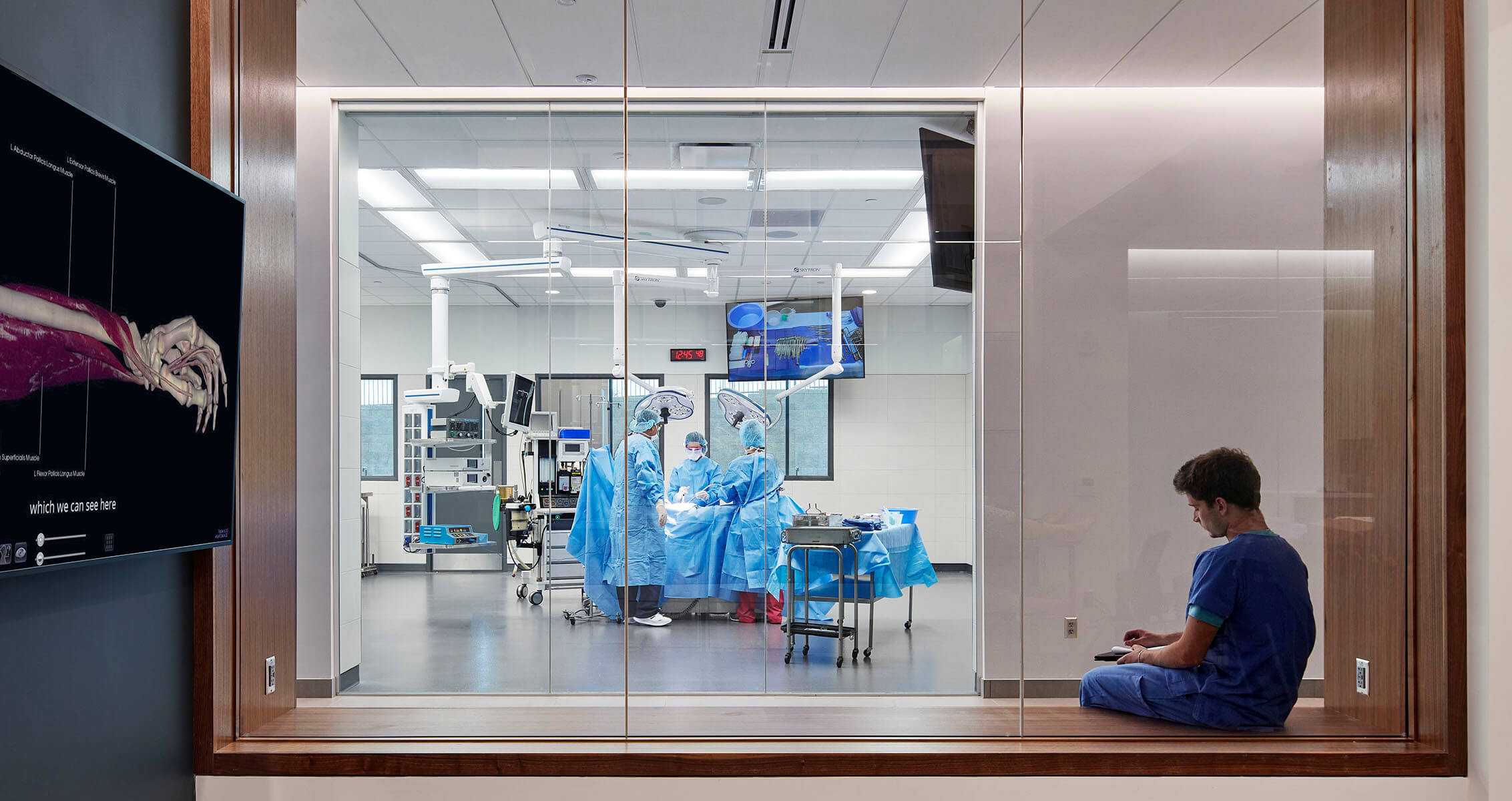
― JILL SAND, HEALTH SCIENCES DEAN
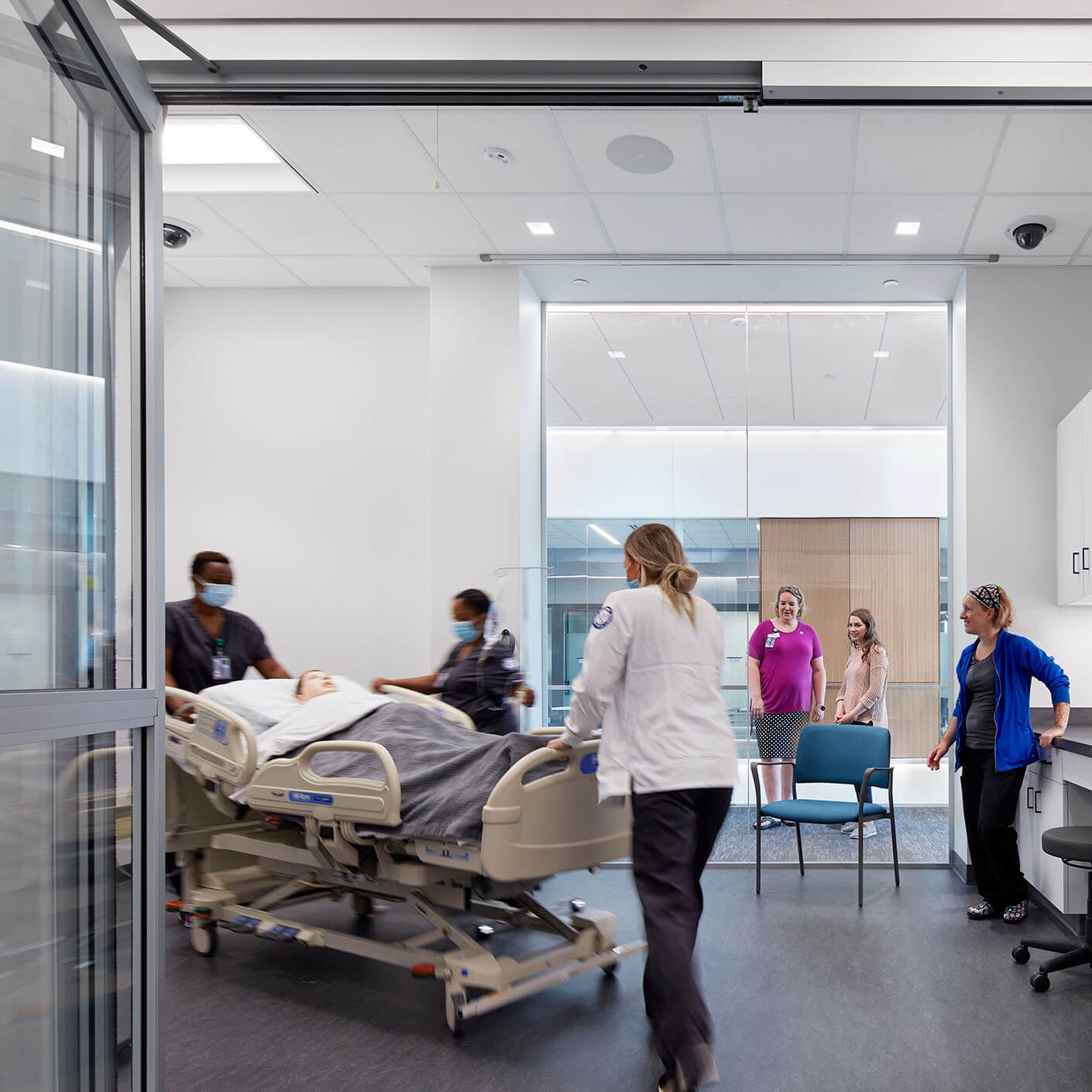
Students in eighteen professional programs gain hands-on experience in:
- health sciences labs
- active learning classrooms
- collaborative workplace environments
- outdoor learning spaces
- a 3-story interdisciplinary simulation center that mimics a real hospital
The former building, with its cinderblock walls and rigidly defined departments, stifled interaction between students in different degree programs. But cross-disciplinary work happens all the time in the real world, and the pandemic has emphasized the importance of flexible training.
Now students and faculty have visibility into classrooms, labs, and realistic work environments. The curriculum requires them to work together, just like they will after graduation.
“It’s neat to see how the new building supports students interacting among professions,” Sand says. “I don’t know why we ever siloed ourselves in healthcare education, because we never work alone.”
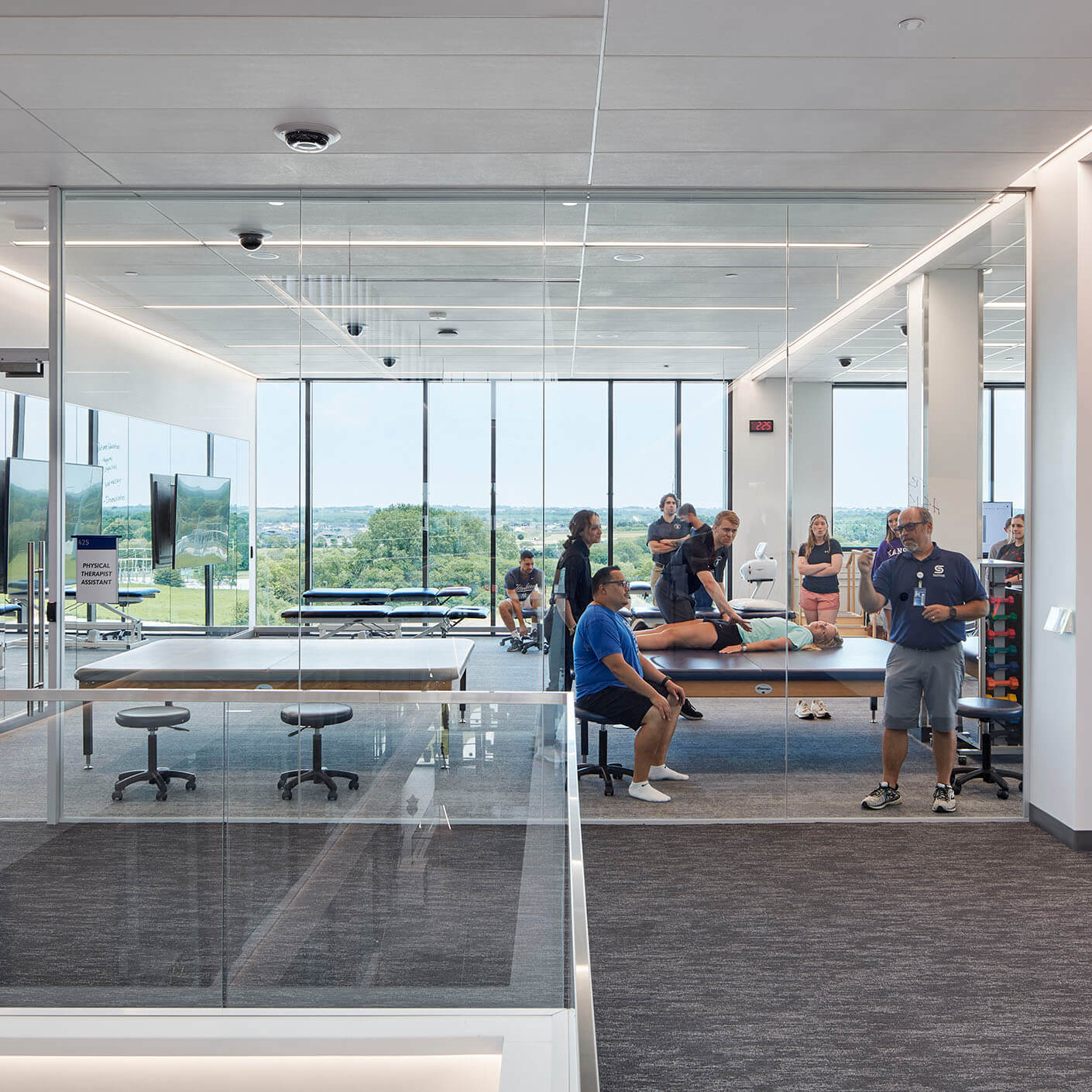
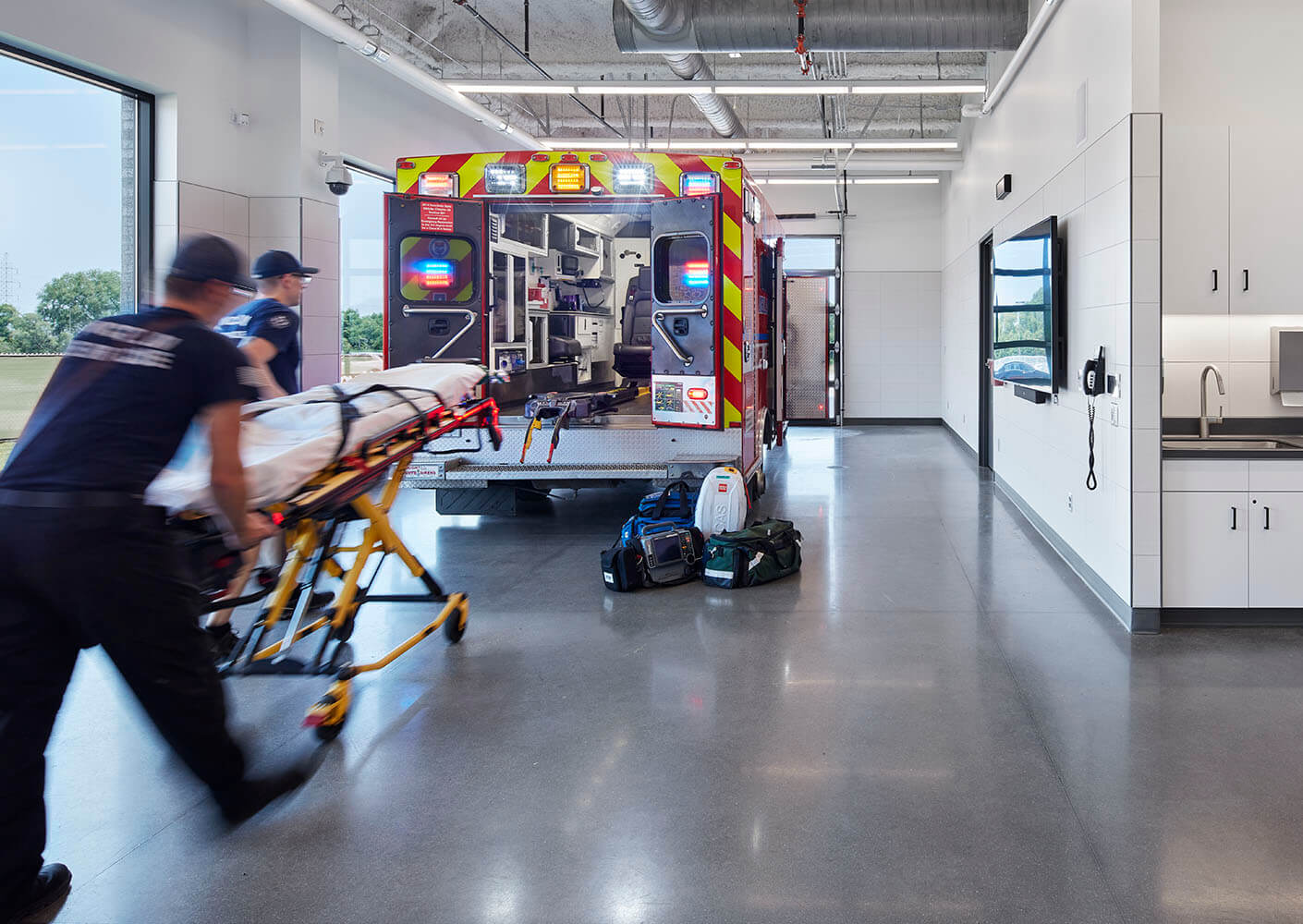
The curriculum and the building work in tandem to facilitate practical, hands-on learning between and among professions. Over the course of their studies, students are required to organize multiple small-scale simulations with their peers in other degree programs.
Once a year, the entire student body participates in a day-long simulation exercise. “The whole south side of the building functions like a little hospital on that day,” Sand says. “Students are moving around everywhere, moving patients from an apartment area to an ambulance in our paramedic lab, then up to our ER simulation center, and then over to surgery. Everything, from the flooring to the flow of the building, feels just like a real hospital.”
Access to healthcare is a growing crisis, particularly in states like Nebraska with far-flung rural populations. More than 100 healthcare access facilities in the state have shut down since 2010, and staff recruitment is among the factors driving the closures.
“Hospitals are having a hard time, and education is a pathway to keep them viable,” Sand says.
The building’s remote learning capabilities open up career opportunities that would otherwise be unavailable to students who live in rural areas hundreds of miles away.
“We don’t want people saying, ‘Oh well, I married a farmer or we have a family business, so moving to go school is impossible,’” Sand says. “That often leads to staying in low-paying jobs and struggling to make ends meet. It changes families and it changes communities when people who want to work in healthcare have a realistic way to get an education.”
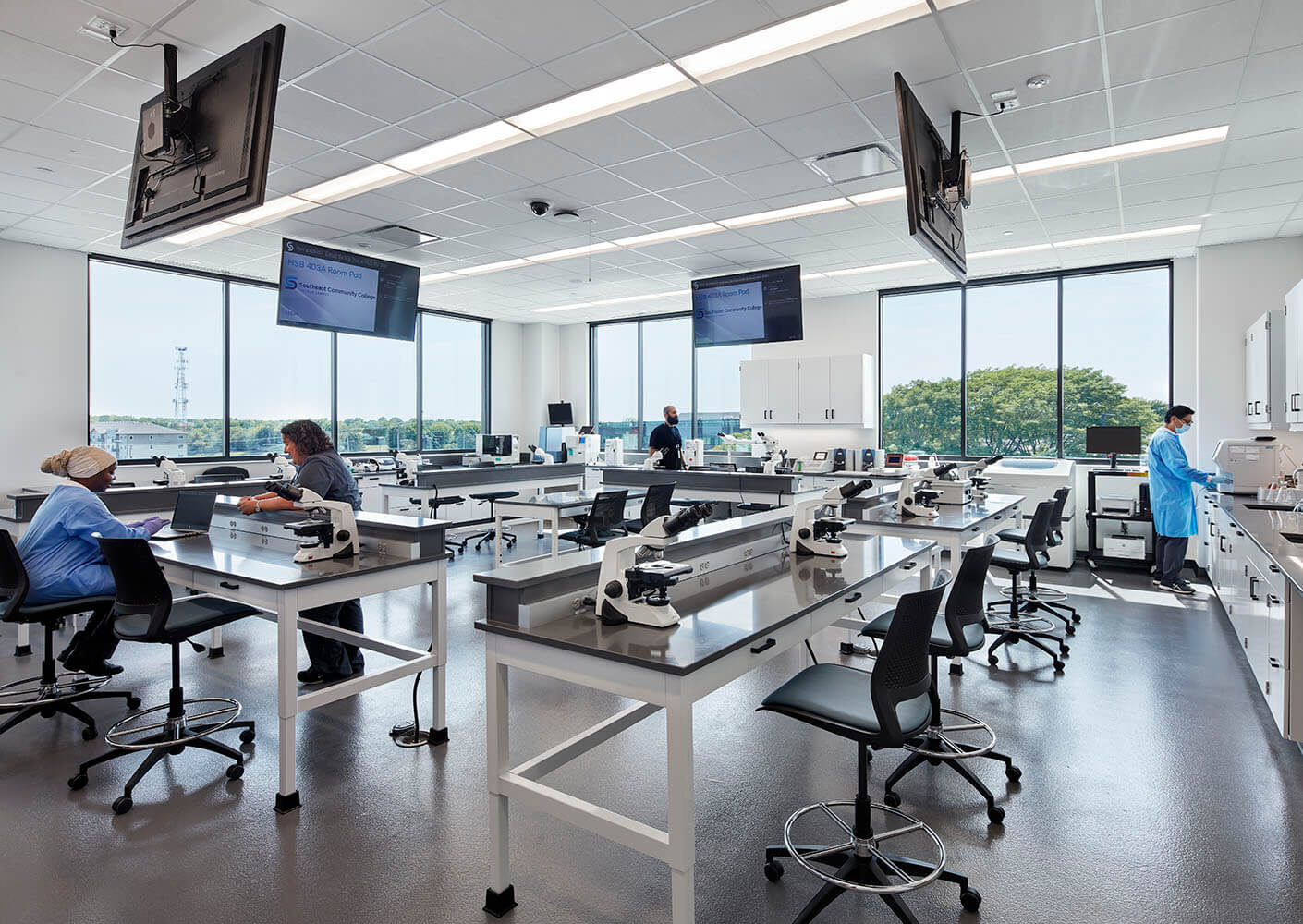
― JILL SAND, HEALTH SCIENCES DEAN
